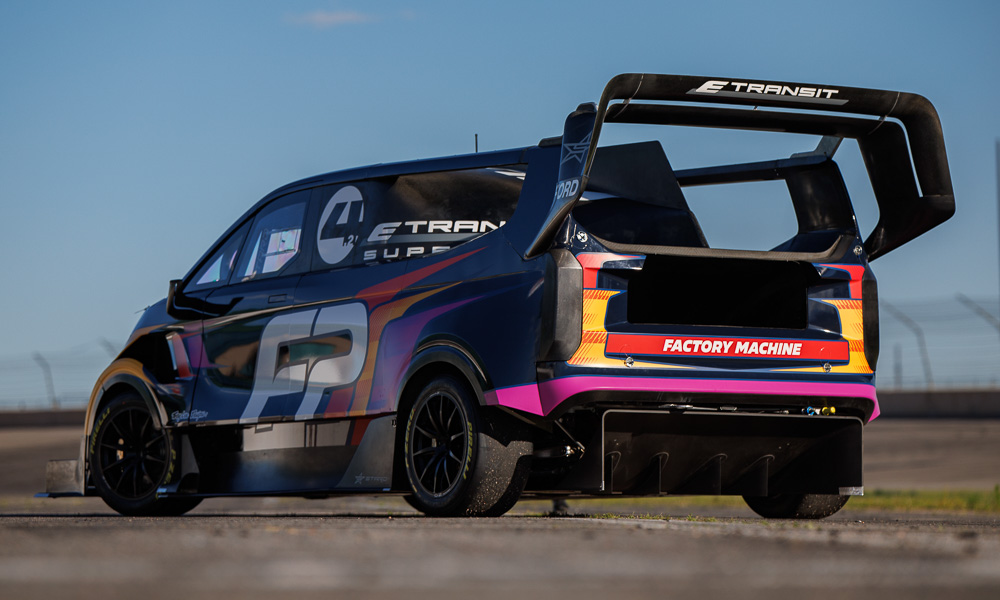
Supervans are a bit of a tradition at Ford. They date back all the way to 1971, when some engineers decided it would be a great idea to bolt a Mark 1 Transit bodyshell onto the chassis of a 400hp V8 GT40.
Since then, at least two more terrifying petrol-burning crossovers have been created, but these days it’s the turn of the electric Supervan to scare the living daylights out of anyone who comes across it.
The latest iteration, the Ford Supervan 4.2, has just been unveiled, and is ready to take on the famous Pikes Peak hill climb with a proper racing legend behind the wheel.



We’re not sure this weapons-grade EV still deserves the name “van.” Only the silhouette vaguely resembles a cargo carrier, and especially the rear view unveils that this is a purebred racing machine.
Designed to compete at the 101st running of the Broadmoor Pikes Peak International Hill Climb, the Supervan 4.2 is a reworked version of the Electric Supervan that has been optimized for the task ahead.
It will be piloted by French racing driver and current Pikes Peak record holder Romain Dumas, giving Ford a pretty good basis for any possible records (or at least a damn good showing at the famous event).




The Supervan 4.2 actually has less power than the previous version, but there’s some method to the madness. Because every kilo counts when you race toward the clouds, the teams at Ford Performance and Stohl Advanced Research and Development—who joined forces for this project—worked hard to make the vehicle much lighter and better suited for the tough and winding track.
The number of STARD UHP six-phase motors was reduced from four to three (one at the front and two at the rear), giving the van an ideal power-to-weight ratio for the task at hand while maintaining four-wheel drive.
The vehicle now churns out 1,050kW or 1,400hp, which should be plenty enough to headbutt the horizon in style.
Liquid-cooled, high-performance lithium polymer NMC pouch cells will ensure there’s always enough juice at hand when the French pilot moves his right foot toward the floor. The battery even features 600kW of regeneration performance if needed.



The bodywork has been redesigned and now features Pikes Peak typical aero with a lightweight carbon-fiber rear spoiler and front splitter, creating around two tons of downforce at 240km/h.
Huge carbon-ceramic discs that hide behind forged magnesium wheels provide ample stopping power, while massive Pirelli P Zero rubber helps to hopefully keep this monster shiny side up.

Even with all that preparation, just making it to the top will be an achievement. Starting from Mile 7 on the Pikes Peak Highway, competitors have to negotiate over 156 turns and climb 1,440m to the finish line at 4,302m above sea level.
Now fully tarmacked, the track averages gradients of 7.2% and is considered one of the most challenging and dangerous hill climbs in the world.











Comments